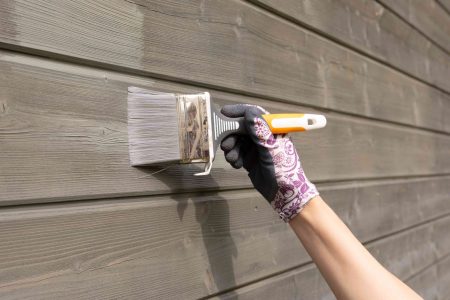Many things about home renovation are flexible. You can always change wall colors or nudge a wall a few inches. But one thing is certain: you need money.
Money is the lifeblood of your home remodel. It’s there at the beginning in the form of a deposit, and it shows up again at the end, as a final payment. And all throughout the process, you’ll have more payments to make, plus a few you didn’t expect.
From liquid assets to home equity and sweat equity—along with a few little-known sources of home improvement money—learn the best ways to finance your home remodel.
Cash and Liquid Assets
-
No interest, fees, or charges
-
You are not dependent on anyone else
-
Funding speed is instantaneous; no waiting liquidate funds
-
Depletes reserves for emergencies
-
Most people do not have a lot of cash available for larger projects, such as additions and full-room remodeling
The most readily available money you can have: savings, checking, CDs, and savings bonds near maturity. Cash is absolutely the cleanest, freest way to pay for your project, as you are not beholden to a lender.
Cash and liquid assets are, without a doubt, the best way to fund your projects, but only if you have plenty to spare. Don’t dip into your emergency funds to pay for that second story.
Some retirement accounts allow you to borrow a certain amount against them. There may be fees or restrictions, so check ahead of time before borrowing.
Sweat Equity
-
Labor is completely free
-
Satisfying to have total control of your project
-
You still have to pay for materials
-
It may be cheaper and faster to hire workers
Do you have any willing friends and family? For the price of takeout pizzas, they may help you put some sweat equity into your renovation project.
Some sweat equity is inevitable and even can be fun, but do not stretch it if you are not sure of your abilities.
Zero-Interest Home Remodeling Loans
-
Money in the form of subsidized interest for your loan—subsidies which you do not have to repay
-
Loans are typically capped at between $25,000 and $50,000
-
Limitations on the types of remodels you can do
Home Improvement Program (or “HIP”) loans from your county are not exactly free renovation loans, but they do come close. Counties and other municipalities will subsidize some or all of the interest on your remodeling loan in order to help preserve local housing stock.
In one scenario involving a five-year, $50,000, 8-percent loan that is subsidized 3-percent through HIP, your total interest savings would be $4,215.
There is substantial red-tape associated with securing these subsidies, including monitoring of the project, time window for completion, and narrow definition of home-related projects. For example, swimming pools, hot tubs, decks, and other luxury-type items are not financed.
HIPs are not for every homeowner. But if you qualify, it is an unbeatable deal. Just be aware of its limitations.
Grants and Rebates
From time to time, some counties or states provide special funding programs to homeowners that can help with remodeling costs. Often, these programs involve grant loans that don’t have to be repaid if you stay in your home for a certain length of time after the remodel. They can have other restrictions, as well.
Usually, these programs are targeted toward projects such as energy efficiency upgrades or area-specific property improvements. The programs can provide funds on their own or work in conjunction with other financing. They are not as rare as you might think. Their existence is seldom advertised. It’s worth checking with your municipality for any current programs before getting started on your project, which could save you a good chunk of money.
Home Equity Loan or Line of Credit (HELOC)
-
Lower interest rates than personal loans and credit cards
-
Large amounts of money may be available for large projects like additions
-
If you keep depleting your equity, you reduce the sum you will receive when you eventually sell the house
-
Temptation to over-spend the money
A home equity loan is a classic way to finance home renovations. With this method, you take out a loan against the equity in your own house. Equity is the worth of your house, minus the amount that you have left to pay on it.
Target this loan only for large projects, such as additions, pools, driveways, and siding.
Credit Cards
-
Money available quickly
-
Lucrative points or rewards possible on some cards by charging large home-related purchases
-
High interest and fees
-
Give you false sense of security that you have more money than you actually have
Using a credit card that you pay off at the end of each month can help you pay for home remodels. Or, use a zero-interest card that you don’t have to pay off for six months or a year. Some homeowners pay off one zero-interest card with yet another zero-interest card, thereby creating a permanent, but risky, no-interest loan.
Using credit cards is a dicey way to finance home renovations, and one that requires attention and maintenance.
Read the full article here














